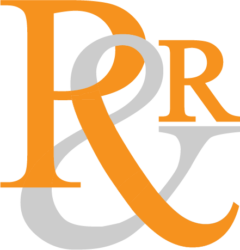After weeks of anticipation, the federal government enacted the Coronavirus Aid, Relief and Economic Security Act (“CARES Act”). The Act is the largest of its kind ever enacted and provides relief for small and mid-size businesses through a variety of programs. The CARES Act also amends and supplements the Families First Coronavirus Response Act (“FFCRA”), which passed in the last two weeks.
These programs offer a variety of benefits to businesses but maximizing those benefits requires careful planning. While the Small Business Administration, Internal Revenue Service and the Department of Labor have responded to recently passed laws by issuing initial guidance, we expect more clarity as these agencies continue to develop rules for how the laws will be administered. It is clear, however, that a business’s workforce composition, operations during quarantine and tax positions will dictate which programs businesses can successfully use and which will invite trouble later.
We have been assisting clients working through these issues and prepared a summary of “hot topics” in the process.
CARES ACT
The CARES Act provides relief to businesses and individuals through a variety of channels. Our focus is on the relief available to our business clients.
Paycheck Protection Loan Program
The CARES Act expands SBA loan eligibility for companies with 500 or fewer employees. In certain industries (for example, hospitality and food service) the SBA will evaluate the number of employees working at a particular location rather than the total number of employees in the company to determine eligibility.
The program allows companies to apply for and receive loans to use for specific business purposes, including payroll costs, continuation of health care benefits, employee compensation (with exceptions for those making more than $100,000 per year), mortgage interest obligations, rent, utilities and interest on debt incurred before the covered period. The Act requires businesses to track and document the use of loan proceeds, although it is currently unclear how this will be enforced. The loans are non-recourse and require no collateral.
Loans are capped at 2.5x the business’s average monthly payroll over the past 12 months (up to $10,000,000). There are several ways to calculate a business’s average monthly payroll and the appropriate method will depend on the business and workforce composition. Adjustments to the calculation of payroll are made for those employees making more than $100,000 per year. The loans bear interest at 4% or less. Debt service payments may be deferred for up to 1 year and there are no prepayment penalties.
Significantly, the CARES Act waives the “credit available elsewhere” requirements typical in both non-emergency SBA loans and emergency loan programs adopted during other significant events. This wavier allows businesses to utilize the program even if they have “credit available elsewhere,” (for example, in the form of a stand-by line of credit or other credit facility) without borrowing from those sources first. This both simplifies the application process, which otherwise would involve a complicated analysis to determine whether a borrower could obtain credit from other sources, and leaves sources of additional credit available should a business require them.
Perhaps the most attractive part of the program is the possibility of debt forgiveness. The program allows for the forgiveness of some or all of the loan amount. The amount of loan forgiveness is equal to the amount spent during the eight-week period after the loan origination date on rent, permissible payroll costs for workers, mortgage interest and utility payments. The amount forgiven is reduced by any reduction of employees by the employer and for certain reductions in wages for employees. If an employer had previously laid off an employee due to COVID-19 and re-hires them by June 30, 2020, there is no reduction in loan forgiveness thereby creating an incentive to rehire laid off employees.
Taking a payroll protection loan makes a business ineligible for the Employee Retention Tax Credit described below.
Employee Retention Tax Credit
The CARES Act also provides for a refundable payroll tax credit for 50% of the wages paid by employers during the COVID-19 crisis and applies to wages paid between March 13, 2020 and the end of the year. The credit is only available if the business’s operations were fully or partially suspended due to a COVID-19 shutdown order; or gross receipts declined by more than 50% when compared to the same quarter the previous year.
The credit applies to the first $10,000 of “qualified wages” paid to an eligible employee. If a company has 100 employees or fewer, the term “qualified wages” includes all wages payable to the employee between March 13, 2020 and the end of the year. If a company has more than 100 employees, the credit is based only on wages paid to employees while the employees are being paid but not performing services due to the shutdown.
Payroll Tax Holiday
Employers can defer the employer’s portion of Social Security taxes. Any amounts due this year could be paid in 2021 (half) and 2022 (remaining half).
Net Operating Loss Carry Backs
The 2017 tax overhaul eliminated a taxpayer’s ability to carry back operating losses. It further limited the ability of a taxpayer to carry forward operating losses by only allowing a payer to offset 80% of income in subsequent years. The CARES Act eliminates both these limitations. For tax years beginning before January 1, 2021, taxpayers can now carry losses back for five years. Thus, certain businesses with losses in 2020 will want to file amended returns as far back as 2013 in order to receive a refund. The CARES Act will also remove the limitation on the use of carry forward losses. Beginning after December 31, 2020, payers will be able to carry forward operating losses to offset 100% of income.
Unemployment Insurance
The CARES Act creates a “Pandemic Unemployment Assistance Program” that is in effect through the end of the year. The program expands both the coverage of unemployment compensation insurance to “covered individuals” who would not otherwise be entitled to other benefits. A “covered individual” is one who (1) is COVID-19 positive or is experiencing symptoms and seeking a medical diagnosis; (2) has a household member who was diagnosed; (3) is taking care of a household member or family member who was diagnosed; (4) has a child who is unable to attend a school that was closed because of COVID-19; (5) is unable to reach their place of employment because of a COVID-19 quarantine; (6) has become a breadwinner because the head of their household died from COVID-19; (7) quit employment because of COVID-19; (8) had their place of employment closed because of a COVID-19 health emergency; and (9) meets rules established by DOL. It also expands coverage to individuals that cannot usually qualify for unemployment – such as independent contractors, self-employed, part-time workers and those without sufficient work history. It excludes those who can telework with pay or if they receive paid sick leave or other paid leave benefits.
The program also increases the amount of the weekly benefit under state law by $600 until July 31.
Economic Injury Disaster Loans
Economic Injury Disaster Loans (“EIDL”) are nothing new and have been administered by the SBA to provide fast support for business. Businesses can borrow up to $2,000,000, on a 30 year term with less than 4% interest. The loans can be used for expenses that are not permitted pursuant to the Paycheck Loan Program and businesses can take both EIDL and Paycheck Loan Program loans.
The CARES Act expands the EIDL program in several key respects. EIDLs can now be approved based solely on an applicant’s credit score, without the need for tax returns. Loans smaller than $200,000 do not require a personal guarantee and only require limited collateral in the form of a general security interest on business property. The Act also expands eligibility for the loans to sole proprietors and independent contractors and all non-profits. The program is only available for businesses that were in existence on January 31, 2020. Like the Paycheck Protection Loan Program, the expanded EIDL program waives “credit available elsewhere” requirements.
The EIDL program also provides for a $10,000 emergency cash grant that is delivered to the business within a few days. There is no obligation to repay the $10,000, even if the business is ultimately denied for a loan. The grant, therefore, can offer a lifeline to businesses needing to meet immediate expenses. Businesses can apply for these loans right now through the SBA website, while the Paycheck Protection Loan Program will be administered primarily through lending institutions.
Families First Coronavirus Response Act
The FFCRA goes into effect on April 1, 2020 and requires certain employers to provide both paid sick and FMLA leave.
Federal law does not generally require employers to provide employees with paid sick leave. Employers with more than fifty employees, however, must provide twelve weeks of unpaid leave for certain medical situations under the Family and Medical Leave Act (“FMLA”). The FFCRA now requires certain employers to provide both paid sick and FMLA leave. The expanded leave provisions are in effect from April 1, 2020 through December 31, 2020.
The FFCRA is both narrower and broader than the “standard” scope of the FMLA. It applies to those employers with less than 500 employees, in effect excluding large employers from coverage and including medium and small employers. The Act does provide an exemption for employers with less than 50 employees if the employer can show that providing leave would jeopardize the viability of the business as a going concern. Businesses are not currently required to submit anything to the Department of Labor to obtain the exemption but are instructed to document the bona fide justification for the need for the exemption.
The Act also broadens the qualifying reasons entitling an employee to paid leave. To qualify for paid leave, an employee must (1) be subject to a Federal, State, or local quarantine or isolation order related to COVID-19; (2) have been advised by a health care provider to self-quarantine related to COVID-19; (3) be experiencing COVID-19 symptoms and is seeking a medical diagnosis; (4) be caring for an individual subject to an order described in (1) or self-quarantine as described in (2); (5) be caring for a child whose school or place of care is closed (or a child care provider is unavailable) for reasons related to COVID-19; or (6) be experiencing any other substantially-similar condition specified by the Secretary of Health and Human Services. Employees are not eligible for leave, however, if they are permitted to work or telework outside of normal hours and the employer and employee agree on those hours. Given Governor Wolf’s recent orders, any employee working in Pennsylvania would potentially be eligible for leave.
Although the FFCRA forces employers to offer additional benefits for employees, it offers employers a dollar-for-dollar reimbursement for the wages paid during the leave period, up to certain per diem and aggregate payment caps. Reimbursement is handled through the use of payroll taxes that would otherwise be withheld by the employer or through tax credits. The Department of the Treasury is working on this process, but generally employers will be able to retain the amount they would have paid in payroll taxes, federal income taxes and employer’s share of Social Security and Medicare taxes for other employees and use it to pay the employees on qualifying leave. If the amount available to be retained to pay employees is insufficient, employers can seek an advance from the IRS.
Anticipated Guidance
It is important to remember that the size and rapid implementation of these sweeping new laws has and will continue to place a significant burden on the agencies tasked with administering it. We expect additional guidance from these agencies that will clarify these programs and facilitate planning.



